

| Online: | |
| Visits: | |
| Stories: |
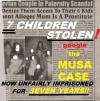
| Story Views | |
| Now: | |
| Last Hour: | |
| Last 24 Hours: | |
| Total: | |
Massive Freemason, Police Cover-up: Paedophile Thomas Hamilton – Dunblane Massacre [Video] + “Freemasons in the Police”, Guardian January 1997
“And Satan is worshipped by men under the name of Jesus; and Lucifer is worshipped by men under the name of Brahma; and Leviathan is worshipped by men under the name of Allah; and Belial is worshipped by men under the name of Buddha” (Aleister Crowley).
“We don’t worship Satan, we worship ourselves using the metaphorical representation of the qualities of Satan. Satan is the name used by Judeo-Christians for that force of individuality and pride within us. But the force itself has been called by many names. We embrace Christian myths of Satan and Lucifer, along with Satanic renderings in Greek, Roman, Islamic, Sumerian, Syrian, Phrygian, Egyptian, Chinese, or Hindu mythologies, to name but a few. We are not limited to one deity, but encompass all the expressions of the accuser or the one who advocates free thought and rational alternatives by whatever name he is called in a particular time and land“ (Anton LaVey).
“There are three categories of Satanists: 1) Traditional Satanists, 2) Religious Satanists, and 3) Freestyle Satanists“. “I would divide Satanic poseurs into three groups – Satanists, Christian Satanists, and nuts. I’d redefine Christian Satanists as those who are attracted to Satanism but can’t seem to break away from Christianity altogether. They continue to work within a primitive framework of Good vs. Evil, taking the part of Evil instead of Good“ (Anton LaVey).
According to ‘The Concise Corsini Encyclopedia of Psychology and Behavioral Science edited by W. Edward Craighead, Charles B. Nemeroff’, “Satanism has been defined in four levels (Simandl, 1997): (1) the experimental-dabbler, typically a teenager; (2) non-traditional, self-styled satanists, individuals or small groups obsessed with satanic themes; (3) organized traditional satanists, organized religious groups that are protected by religious freedom under American law, such as the Church of Satan; and (4) occultic networking or transgenerational cults, SRA groups perpetuated through family generations and the focus of this article (Ryder, 1992)“.
“My number is 11, as all their numbers who are of us. The Five Pointed Star, with a Circle in the Middle, + the circle is Red. My colour is black to the blind, but the blue + gold are seen of the seeing. Also I have asecret glory for them that love me” (Paedophile Aleister Crowley).
The Nine Satanic Statements originally appeared in The Satanic Bible, © 1969
The Eleven Satanic Rules of the Earth by Anton Szandor LaVey © 1967
Crowley wrote a chapter on ancient blood sacrifice in his book ‘Magick in Theory and Practice‘ the chapter headed ‘OF THE BLOODY SACRIFICE: AND MATTERS COGNATE‘, “There is a Magical operation of maximum importance: the Initiation of a New Aeon. When it becomes necessary to utter a Word, the whole Planet must be bathed in blood. Before man is ready to accept the Law of Thelema, the Great War must be fought. This Bloody Sacrifice is the critical point of the World-Ceremony of the Proclamation of Horus, the Crowned and conquering Child, as Lord of the Aeon” (Paedophile Aleister Crowley, 1911).
“I felt a culmination of that whole episode in my life many years later, shortly after The Satanic Bible came out. I met with Assaf Dayan, actor son of Israel’s legendary Defense Minister Moshe Dayan, and he was glowing about the book, agreed with every in it. He said it was exactly the philosophy they practiced, were forced to practice, in modern Israel” (Anton LaVey).
see the full article with much more info: http://ecbiz126.inmotionhosting.com/~intmen5/masonicpolice.htm
Freemasons in the police
The Guardian Published January 1997
Today the Guardian publishes for the first time what we believe is a unique photograph. It pierces the wall of secrecy which surrounds one of Britain’s most mysterious organisations by revealing a large gathering of London policemen wearing the white gloves, embroidered sashes and lambskin aprons of the worshipful order of freemasonry.
At the time that the picture [above, see article below] was taken, these 60 men were members of Masonic Lodge number 9179, known as the Manor of St James, which was founded eleven years ago, on January 27 1986, for the exclusive use of Scotland Yard officers who had worked in the West End of London. The picture, which has been leaked to the Guardian by non-Masonic Metropolitan police officers, appears to have been taken at one of their inaugural meetings and includes men who then occupied some of the most powerful jobs in the force.
Since April 1985, when Sir Kenneth Newman was Commissioner, Scotland Yard have been advising their officers to stay away from the lodges. According to The Principles of Policing, which was produced under Sir Kenneth: “The discerning officer will probably consider it wise to forgo the prospect of pleasure and social advantage in freemasonry so as to enjoy the unreserved regard of all those around him. It follows from this that one who is already a freemason would also be wise to ponder from time to time whether he should continue as a freemason.”
And yet the Manor of St James is still active. On Monday of this week, a Guardian photographer caught dozens of former and serving police officers as they made their way through the crowded pavements of St James’s Street, off Picadilly. Wearing dinner jackets and carrying their Masonic regalia in flat black brief cases, they converged on number 86, an imposing sandstone building which looks like any of the gentleman’s clubs around the corner, in Pall Mall, but which is in fact the site of a Masonic temple.
Inside, they gathered to hold their annual ritual to install a London policeman as the new master of the lodge, to elect other police officers as their stewards, tylers and almoners, and to consider the names of prospective new members, all of them drawn from the past and present ranks of the Metropolitan Police, all of them willing to be blindfolded with a noose around their neck and a dagger to their heart while they are warned that if they break their vows of secrecy and loyalty, they will have their throats cut and their tongues torn out by the root. And then, until late into the night, they dined together.
The leaking of the photograph co-incides with new efforts by politicians and senior police officers to meet public concern about the role of freemasons in law-enforcement. Masons insist that they are misunderstood and that their organisation stands for service to “our God, our country and our laws”. Critics fear that the secrecy of the organisation and its stern oaths of “mutual defence and support” conflict with a police officer’s need to be seen to apply the law impartially.
The Police Complaints Authority, which says its own ranks are free of masons, is pressing for a new law to compel police masons to declare their membership on a register of interests. Last October, the Association of Chief Police Officers, ACPO, supported the move. And today (Jan 29), the House of Commons Select Committee on Home Affairs continues its own inquiry into the issue, taking evidence from ACPO as well as from the Police Federation, which represents lower ranks and which is fighting for the status quo. Until now, the issue has been as secretive as it has been controversial.
The evidence of the membership of the Manor of St James is that freemasonry reaches high into the command structure of the Metropolitan Police. Among the founder members of the lodge was Gilbert Kelland, who was in charge of all of London’s three thousand detectives when he was the Assistant Commissioner for Crime from 1977 to 1984. He is pictured here in his regalia, in the third row back, three from the right.
Among his worshipful brothers who joined the lodge, in spite of Sir Kenneth’s request, are two Deputy Assistant Commissioners, Peter Nievens and Edgar Maybanks; twelve commanders, including George Churchill-Coleman and Jim Neville, both of whom headed the Anti Terrorist Squad, and Malcolm Campbell, who was the head of Scotland Yard’s intelligence branch; John Cass, who was a Scotland Yard commander before becoming co-ordinator for the nation’s regional crime squads; at least two dozen chief superintendents; a dozen superintendents; and more than a score from the lower ranks.
One of the few officers in the lodge who did take Sir Kenneth’s advice is Tony Speed, who is now the Assistant Commissioner for Central London. He said last week that he had followed his father and grandfather into the Craft, joining his first lodge when he was 21. “There was no furore about it in those days and I have to say that in something like 20 years as a mason I never came across anything that made me feel ashamed or that I felt was wrong. But then about ten years ago, the public perception began to change and we were advised that we should reconsider our position and so, simply because of this problem of perception, I resigned.”
Most of his colleagues in the lodge did not see it that way. Malcolm Campbell is still serving as a commander and has not resigned from the lodge but says that he no longer attends its functions. Many of the others in the picture are now retired although sources who know the Manor of St James say they have been joined by a steady stream of serving officers.
Martin Short, author of the most detailed account of modern British freemasonry, Inside The Brotherhood, estimates that 20% of London officers belong to Masonic lodges. He says there is cause for concern about this and in December, he gave evidence to the Select Committee inquiry of a case he had researched recently in Lancashire which, he told them, “demonstrates just how badly the administration of justice can go wrong when police, Crown Prosecution solicitors and private citizens are all in the same Masonic lodge.”
This story began one night in 1988 when two Leicester businessmen were taking a late-night drink in a hotel in Blackburn. A group of burly strangers in dinner jackets ordered them out of the bar. The Leicester men declined to go. The strangers then announced that they were policemen and proceeded to beat them up. They then called other police who arrested the two Leicester men and charged them with assaulting police officers. When the Leicester men were released on bail the next morning, they found that the hotel manager had seized their belongings until they agreed to pay for damage caused by the fight and that someone had let all the air out of their car tyres and removed their hub caps.
The Blackburn police and Crown prosecutors pursued the case to court, where the two Leicester men faced substantial jail sentences for allegedly assaulting policemen. But the case fell apart. The jury rejected all of the police evidence and found that the Leicester businessmen were not guilty of any offence at all. The judge signalled his own view by taking the unusual step of ordering that the defendants’ costs should be paid out of the public purse. The two men then sued for assault, wrongful arrest, malicious prosecution, conspiracy to injure and libel. In an out-of-court settlement, they were awarded £170,000, most of which was paid on behalf of the policemen by the Lancashire force.
Martin Short told the Select Committee that freemasonry was at the heart of this case. The two Leicester men had stumbled into the tail-end of a Masonic event, a dinner organised by the Victory lodge of Blackburn. This lodge, said Short, is dominated by police officers: the policemen who were involved in the original fight, the officer who subsequently investigated the incident, a senior official in the Crown Prosecution office which handled the case, and the manager of the hotel where the dinner took place were all members of the Victory lodge.
No-one is suggesting that all Masonic officers are corrupt or even liable to become corrupt. However, in the past, there have been occasions when Masonic lodges have acted as nests of corruption, where detectives have rubbed shoulders with professional criminals in an atmosphere of friendship and loyalty with disastrous results. When Scotland Yard’s Obscene Publications Squad was destroyed by scandal in the late 1960s, twelve officers were jailed for taking bribes from pornographers. All of them were masons, including the head of the squad, Detective Chief Superintendent Bill Moody, who had even helped one of the pornographers he was supposed to be arresting to become a member of his own lodge.
On the other side of the argument, there have been high-profile examples of Masonic officers fighting corruption. During the Operation Countryman inquiry in the 1980s, it was a Masonic detective chief superintendent, John Simmons, who secretly tape-recorded his brother mason, Detective Chief Inspector Phil Cuthbert, boasting of his villainy and of the involvement of other senior officers in taking bribes and setting up armed robberies. However, Simmons was later ostracised by his lodge, while Cuthbert continued to be welcomed, even after he had been convicted and jailed for three years.
Some of the most angry critics of freemasonry are police officers who do not belong to the lodges. They fear that masons may promote brother officers and conceal each other’s wrong doing and that, on occasion, they might abuse their internal powers to discipline troublesome non-masonic officers. One serving Metropolitan Police detective said: “This is a secret society at the heart of Scotland Yard. I have no doubt that some masons use the lodges to get their way and this is not acceptable for the public or for the police service as a whole.” The Police Complaints Authority says that some officers have approached them privately to voice their concerns about some masonic colleagues.
One non-masonic officer says he reported to his commander that colleagues had invented a fictitious informer so that they could claim reward money for crimes which they solved and then share it among themselves. He claims that he was moved sideways while his colleagues were allowed to carry on and that he subsequently discovered that the corrupt officers and the commander were all “on the square”. Another claims to have heard a superintendent boasting that he was recruiting a new officer to his squad and that he was shortlisting only masons.
The Police Complaints Authority has run into problems with masonic officers. On one occasion a man complained that he had been charged as the result of a masonic conspiracy. He then discovered that the superintendent who was investigating his complaint was himself a mason. The superintendent resigned and was replaced by a second officer who also turned out to be a mason. On another occasion, a provincial Chief Constable simply refused to ask whether one of his officers, who was looking into allegations about masons, was himself a member of a lodge.
Masons played a prominent part in the demise of John Stalker, the former Deputy Chief Constable of Manchester who tried to unravel a cover-up of political shootings in Northern Ireland and in the case of the Scotland Yard Chief Inspector Brian Woolard, who found evidence that his career had been blighted by senior masons after he attempted to uncover the role of civilian masons in a fraud. Masonic officers argue that policemen who want to be corrupt can make bad friendships through golf clubs or Round Table dinners, and that the lodges have no special influence.
When Sir Kenneth Newman produced his advice in 1985, his office considered all of the available evidence. The booklet which he produced acknowledged that the lodges offered friendship, a chance to mix with “some of the most distinguished people in the land” and an invitation to self-improvement. It noted that many of the allegations that were made against them were unsupported or plain wrong. Yet it concluded that some of the allegations were reliable and that the exclusivity of the lodges, the oddness of their rituals and their collection of coded signals amounted to a significant problem. “They militate against the acceptance, by colleagues and citizens alike, of an officer who is a freemason as a man on whose fairness it is possibly to rely always and unquestionably… A freemason’s oath holds inevitably the implication that loyalty to fellow freemasons may supersede any other loyalty.” The worshipful brothers of the Manor of St James disagree.
The two sides of the story came face to face late last year when the current Metropolitan Commissioner, Sir Paul Condon, appeared in front of the Select Committee which is investigating freemasonry in law enforcement. The Commissioner had reassured the committee that all was well but, as he prepared to leave, he was confronted by Chris Mullin, the ebullient Labour MP for Sunderland South, who had acquired his own copy of our photograph. Mullin pulled out the picture and told the Commissioner: “I thought you might like to have a look at your alternative command structure.”
The evidence of the membership of the Manor of St James is that freemasonry reaches high into the command structure of the Metropolitan Police. Among the founder members of the lodge was Gilbert Kelland, who was in charge of all of London’s three thousand detectives when he was the Assistant Commissioner for Crime from 1977 to 1984. He is pictured here in his regalia, in the third row back, three from the right.
Among his worshipful brothers who joined the lodge, in spite of Sir Kenneth’s request, are two Deputy Assistant Commissioners, Peter Nievens and Edgar Maybanks; twelve commanders, including George Churchill-Coleman and Jim Neville, both of whom headed the Anti Terrorist Squad, and Malcolm Campbell, who was the head of Scotland Yard’s intelligence branch; John Cass, who was a Scotland Yard commander before becoming co-ordinator for the nation’s regional crime squads; at least two dozen chief superintendents; a dozen superintendents; and more than a score from the lower ranks.
SOURCE: http://ecbiz126.inmotionhosting.com/~intmen5/masonicpolice.htm
orig. posted here 15/01/2013
———————————————————————————————————————-
See more - videos, films, etc:
https://butlincat.blogspot.com/2016/12/massive-freemason-police-coverup.html
———————————————————————————————————————–




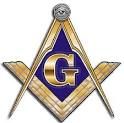
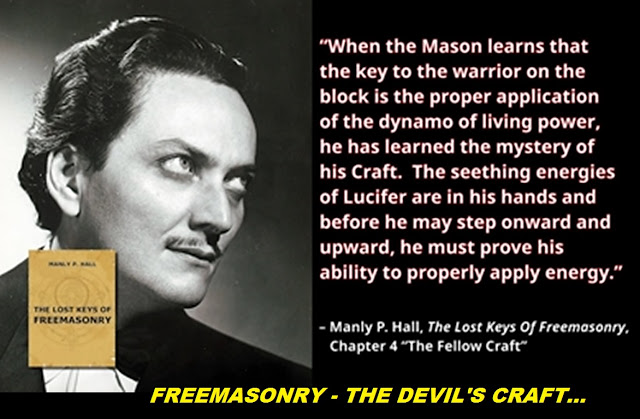


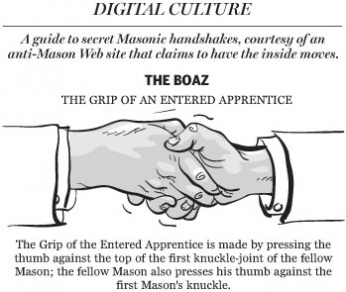


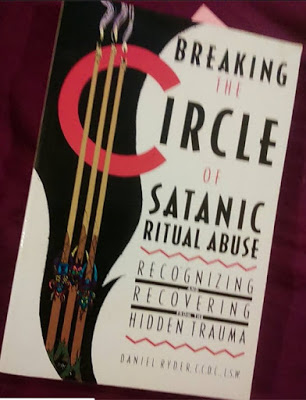

See more – videos, films, etc:
https://www.butlincat.blogspot.com/2016/12/massive-freemason-police-coverup.html